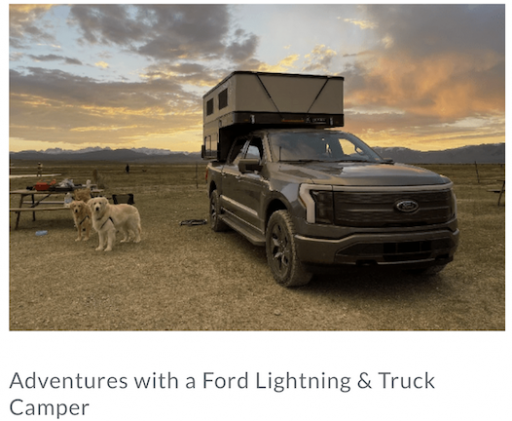I used to be somewhat anti-EV, but if I'm being brutally honest that was mostly just because I've always been a "car guy" and somehow felt obligated to be anti-EV. Like a lot of things (such as die-hard brand loyalty) as I get older I realize it's just silly to be so closed minded, or to feel so required to think one way. Over the last ~5 years I've driven a lot of EVs, and I actually had a Tesla Model 3 Performance for ~6mo while the owner, a good friend, was out of town. After that experience, I definitely can say "I get it" now.
The performance is a blast (the 3 Perf was quicker 0-60 and 1/4 mi than the Trackhawk I had) and one-pedal driving just makes so much sense once you get used to it. The ultra-smooth, quiet day to day use also is infectious and makes you think "this is how a daily driver should be." That said, when you are getting after it, the lack of shifts, noise, and drama in general makes it somewhat dull (even though the perf itself is actually super intense).
I even drove the 3 from my house in Vegas to the Bay Area, so I got to experience the road-trip charging story. All-in-all it wasn't so bad, but I'd say it added somewhere between 30 and 60 minutes to my trip (which is ~8hrs in an ICE vehicle). Doing it once, NBD. A few extra stops for a coffee and stretching the legs isn't the end of the world. However, doing trips like that regularly it'd get super annoying. That, and anything other than a Tesla would have been way more problematic and annoying (though, I hear maybe Tesla opened up their charging network to non-Teslas?).
So, for somebody that does a bunch of around-town driving, then has a daily commute to/from work that is comfortably under an EV's range (pretty easy these days since most EVs have 200+ miles of range) I can absolutely see why somebody would buy one. Moreover, if said person can charge free at work, has very cheap electricity over night, and/or has solar on their house that generates more than their current consumption it makes even more sense.
All of that said, EVs just aren't ready for Overlanding, at least the way most of us want to do it. Range had gotten good enough, and the charging networks common enough, that a person could plan *around their EV* and make a trip work, sort of. If you charge shortly before hitting the dirt and are either going for 1 night or are going to stay in one spot for the entire trip you could do a decent trip with an EV. Essentially it'd be something like charging just before hitting dirt, get to a camp and stay however many nights with little/no moving the vehicle around, then get back out and charge just after leaving dirt, get home (with all the charging stops you want/need). That greatly limits your options, and pretty much rules out things like BDRs. Still, it's not flat-out impossible to Overland an EV... you just have to accept the trade-offs.
One of my best friends, the one who owned the Model 3 Perf I had, just got a Rivian R1S. He's big into the idea of going on a camping (Overlanding) trip with it. So, once he gets some time with it I'm going to plan something that will work within the limitations of his rig. I look forward to seeing how it all works out.
-TJ

 www.pairedpower.com
www.pairedpower.com

 www.pairedpower.com
www.pairedpower.com













